At heart, bok choy is just a cabbage, but it’s still considered pretty exotic in most American kitchens. Sure, many of us eat it regularly in Chinese restaurants, but surprisingly few of us cook with it at home — and that’s a real shame.
Greener and leafier than its European Brassica counterparts — like broccoli, cauliflower, kale and Brussels sprouts — Asian bok choy has long tender leaves, and its smooth white stalks are similar to romaine lettuce or celery.
Thanks to its subtle sweetness and crunchy bite, bok choy is highly versatile (it goes great with Southern-style ribs and chicken wings, for example) and it is chock-full of phytonutrients that help nourish and detoxify the body.
Best of all, it’s inexpensive and widely available. So feel free to experiment a little. Dress bok choy up or down. But do give it a place at the table.
Shopping and Storage Tips
- When purchasing, choose bunches that have firm, plump, moist white stalks. Look for leaves that are fresh, crisp and green — not yellow or brown.
- Narrower heads with long stalks work best for crunchy stir-fries. Choose bunches with large leaves — or baby bok choy — when you want more greens for a dish.
- Store unwashed bok choy in an airtight container in the refrigerator for no more than three to four days.
- Buying organic is preferable, but bok choy — like other cabbages — faces relatively few threats from pests and therefore requires less pesticide when grown conventionally.
Nutrition Know-How
- Like other cruciferous vegetables, bok choy is a good source of vitamin C, fiber and sulfur-containing phytonutrients that help with antioxidant activity and detoxification.
- Compared with other cabbages, bok choy has a higher concentration of beta-carotene and vitamin A.
- Bok choy is rich in minerals, including calcium, phosphorous, potassium, manganese, iron and magnesium.
- Bok choy is lower in oxalate, a substance in plants that binds up calcium and prevents the human body from absorbing it, than other leafy green vegetables. The body can absorb 54 percent of the calcium in bok choy but only 5 percent from spinach, which is high in oxalate.
Kitchen Tricks
- To prepare full-size bok choy, first halve the head lengthwise and cut out the tough core at the base. Next, soak the halves in cool water. Make sure to swish them around a few times. Rubbing the leaves together will help remove the grit and sand that can get lodged close to the core. Pat dry.
- When chopping, separate the stem pieces from the leaves. Toss the stems into the pan first, since they take longer to cook than the leaves.
A Cabbage by Many Other Names
Bok Choy = Chinese cabbage, bak choi, pak choi, Chinese chard cabbage, Chinese mustard cabbage, Chinese white cabbage, pe-tsai and white celery mustard.
Size ‘Em Up
Bok choy of any size can be used interchangeably in recipes. But if you have a choice when purchasing, here’s how to select for optimal use:
Bok Choy: About the size of your forearm. Chop up the stems and add to stir-fries. Cook the broad leaves like Southern-style greens.
Baby Bok Choy: About the size of your hand. Sauté whole or chopped for a simple side dish.
Baby Baby Bok Choy: About the size of your thumb. Also called “dwarf baby bok choy.” Blanch by quickly submerging whole in boiling water, shock in ice water, then add to salads.
Bok Choy Recipes
Bok Choy Stir-Fry With Tomato-Ginger Sauce
This tangy stir-fry is a great way to enjoy abundant summer tomatoes. Try with pork, beef, chicken, tempeh or tofu.

Makes | four servings
Ingredients
- 4 Roma tomatoes, coarsely chopped (about 11/2 cups)
- 2 tbs. minced gingerroot
- 3 cloves garlic
- 1 tsp. rice wine vinegar
- 1/4 to 1/2 tsp. cayenne pepper
- 2 tbs. tamari
- 1/4 cup honey
- 1 tbs. coconut oil, divided
- 1/2 pound sliced pork
- 1 cup thinly sliced yellow onion
- 6 heads baby bok choy, quartered (or 6 cups chopped bok choy)
- 4 cups cooked brown rice
Directions
- Put the tomatoes, ginger, garlic, vinegar, cayenne, tamari and honey in a blender and blend until smooth.
- Heat a large heavy skillet with half a tablespoon of the coconut oil and stir-fry the pork until just done. Remove from the skillet and set aside.
- Return the skillet to the heat and add the remaining coconut oil, and stir-fry the onions and bok choy together until just cooked; remove from pan.
- Reheat the skillet over medium heat and add the blended tomato-ginger sauce.
- Stir while cooking until the sauce begins to thicken, then add the meat, bok choy and onions. Stir until evenly coated and heated through.
- Serve with brown rice.
Braised Baby Bok Choy With Pancetta, Garlic and Sherry
Although bok choy is typically paired with Asian flavors, this recipe shows its versatility. Serve with roasted or grilled meat or seafood. For a vegetarian option, use toasted walnuts instead of pancetta for a rich flavor with some crunch, and a dash of Spanish paprika for a smoky hit.

Makes | four servings
Ingredients
- 1 tbs. extra-virgin olive oil
- 4 slices pancetta, cut into strips
- 4 cloves garlic, thinly sliced
- 6 to 8 heads baby bok choy, cut into quarters lengthwise
- 1/4 cup dry sherry, apple cider or apple juice
- Salt and freshly ground black pepper to taste
Directions
- In a large heavy skillet, heat the olive oil and add the pancetta, cooking until almost crisp. Add the garlic and sauté for a couple more minutes.
- Then add the bok choy and sauté until just tender but still firm. Add the sherry and stir to deglaze the pan.
- Simmer for about two to three minutes.
- Season with salt and pepper to taste.
Bok Choy Spring Rolls
Spring rolls are the perfect vehicle for your favorite veggies. For fun, fill separate bowls with shrimp, veggies and herbs — and let people customize and roll their own dinner (great for picky eaters!).
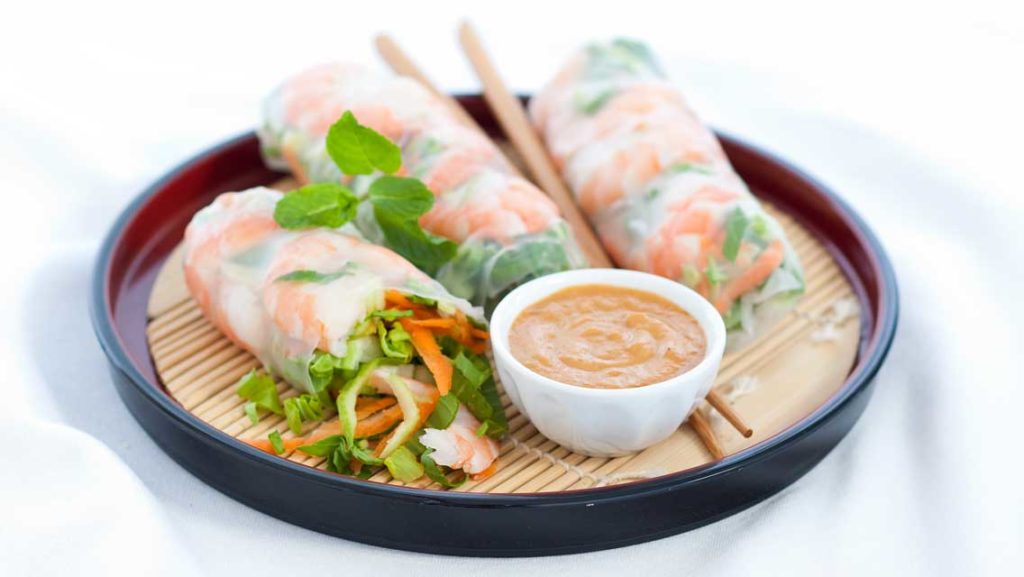
Makes | nine spring rolls
Ingredients
- 2 heads baby bok choy, finely sliced or shredded, washed and dried well
- 1 cup grated carrot
- 1/2 cup chopped green onion
- 1/2 cup chopped fresh mint
- 1 cup chopped fresh cilantro
- 9 rice spring-roll wrappers, 8 inches round
- 8 ounces cooked shrimp or other protein (cooked tofu or chicken, for example)
Directions
- Toss the bok choy, carrot, green onion and herbs together in a bowl.
- Heat water so that you can comfortably put your hand in it briefly, and then one at a time, dip the spring-roll wrappers into the water until softened.
- Place a moistened spring-roll wrapper on a plate or cutting board, arrange three to four pieces of shrimp in the center of the wrapper, and top with 1/2 cup of the veggie mixture.
- Roll up the spring roll just like a burrito and serve immediately with dipping sauce. (For a great peanut dipping sauce recipe, go to ELmag.com/saladdressings.)
Thai-Inspired Bok Choy and Pineapple Salad
This fresh summer salad can be prepped the day before, but toss the salad ingredients with the dressing right before serving for the freshest taste. Try adding 1/2 cup chopped red bell pepper for more color. If you can’t find Thai basil, use regular basil. If you don’t care for fish sauce, substitute tamari or soy sauce.
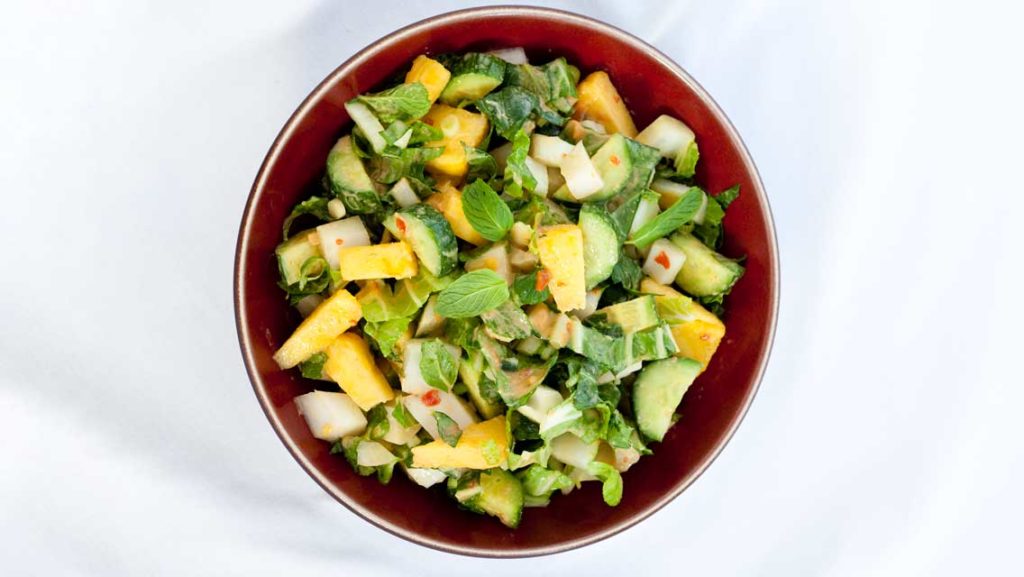
Serves | four to six
Ingredients
- 4 cups chopped bok choy, washed and drained
- 1 cup chopped pineapple
- 1 cup sliced cucumber
- 1/4 cup chopped scallions
- 1/4 cup chopped mint
- 1/4 cup chopped Thai basil
- Zest and juice of one lime
- 1 tbs. fish sauce
- 1 to 2 tsp. chili garlic paste (or Sriracha, or 1 tsp. minced jalapeño and 1 clove minced garlic)
- 1/4 cup peanut butter
Directions
- Toss the bok choy, pineapple, cucumber, scallions, mint and Thai basil together in a large bowl.
- Whisk the remaining ingredients together in a smaller bowl and toss with the bok choy mixture.
- Chill until ready to serve.
Easy Does It
Celebrity chef Ming Tsai doesn’t remember a time he wasn’t eating bok choy. Growing up in Dayton, Ohio, he ate it regularly at the Chinese restaurant his parents owned. Today, Tsai regularly incorporates it into dishes at his own restaurants, Blue Ginger in Wellesley, Mass., and Blue Dragon, which just opened in Boston. What really made an impression on the 49-year-old, who is best known as the host of Simply Ming on PBS, was seeing how bok choy is treated at Chinese banquets in China, Hong Kong and Taiwan. “Bok choy is revered, just like scallops, shrimp and lobster,” he says. Tsai talked with us about how easy it is to incorporate this beautiful veggie into a variety of dishes.
What do you like about the flavor and texture of bok choy?
It is basically a very subtle, sweet-flavored cabbage. Bok choy has a little crispness to it, but at the same time it’s very tender — much more tender than the white or red cabbage you’d use to make coleslaw. Its texture is very similar to Napa and Savoy cabbage. Because the flavor is so subtle, it’ll go with any dish.
Can you offer some preparation tips?
Bok choy is a very easy-to-prep vegetable — with one caveat: Make sure there’s no grit. You really have to clean it well.
What’s the best way to cook it?
Sauté it — boom, boom, boom — pretty quickly until it’s hot, which takes only a minute. If you’re doing chopped leaves, first sauté the white parts, which take a little longer to cook, then add the green leafy parts toward the end. My favorite way to eat bok choy is sautéed in a wok with minced garlic, minced ginger and sliced scallions, stirred with a little soy at the end. Delicious.
Any other suggested preparations?
If there’s something you’re doing in the oven or on the stovetop that has a good amount of liquid, add the bok choy in the last eight minutes; just make sure it’s submerged in the liquid. To prepare bok choy for salads, I like to dip it into boiling, salted water and then shock it in ice water. That gets rid of the rawness and retains the color. You can also add it to braised dishes, like coq au vin or braised short ribs or pork shank. And of course, it is great grilled.
How about flavor pairings?
Consider bolder flavors to contrast bok choy’s mildness. Some favorites would be garlic, black garlic, ginger, fermented black beans and sesame oil.
What would you say to someone thinking about trying bok choy for the first time?
Spend three dollars and try it — you have nothing to lose. For fun, buy a whole bunch of different cabbages the next time you’re in an Asian market. Some are sweeter, some are more bitter, and most are under a dollar a pound. Stir-fry them all and taste them. You’ll find one you’ll really like and save yourself a bundle of money on groceries.
Recipes were created by Betsy Nelson (a.k.a. “That Food Girl”), a Minneapolis-based food stylist and recipe developer.
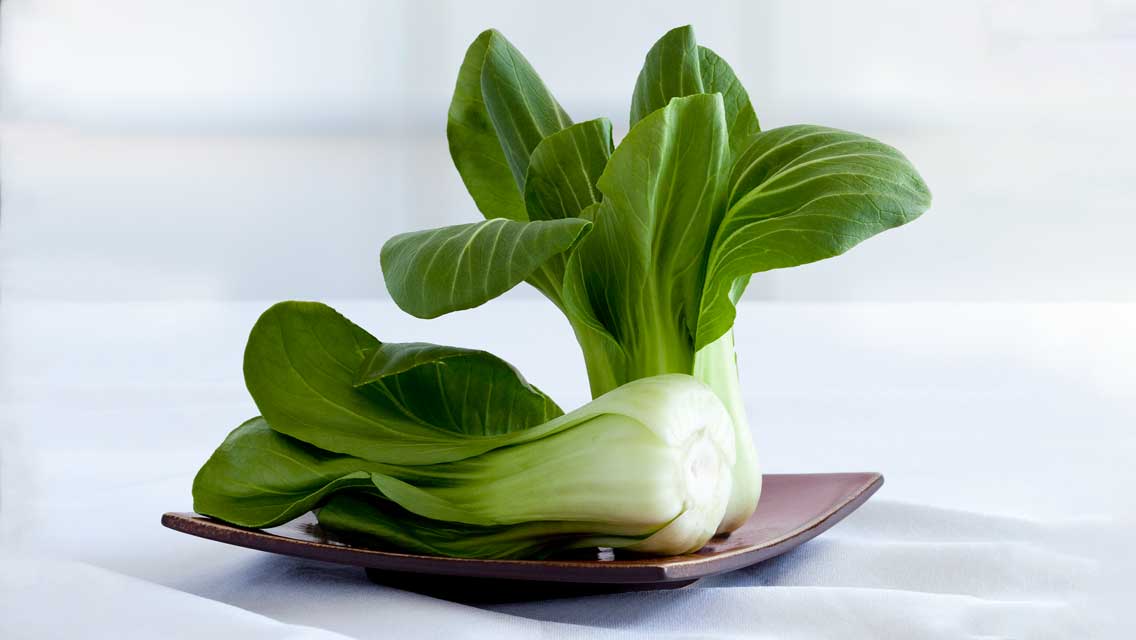
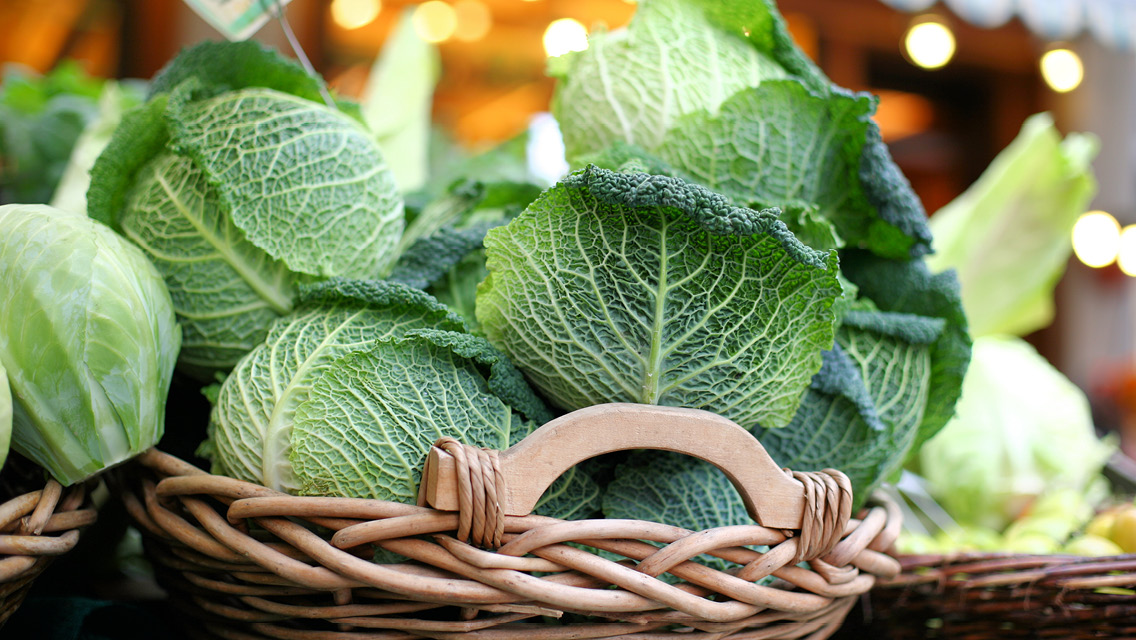

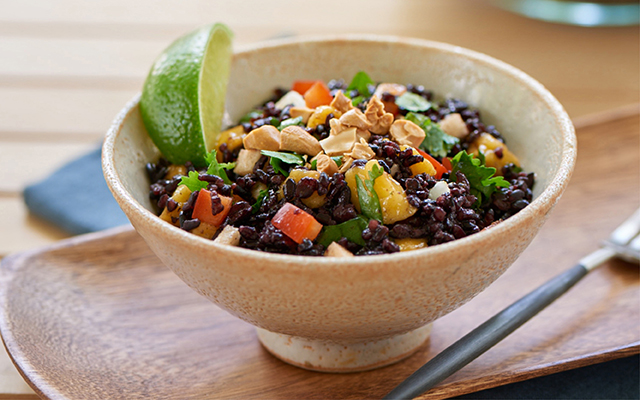
This Post Has 0 Comments